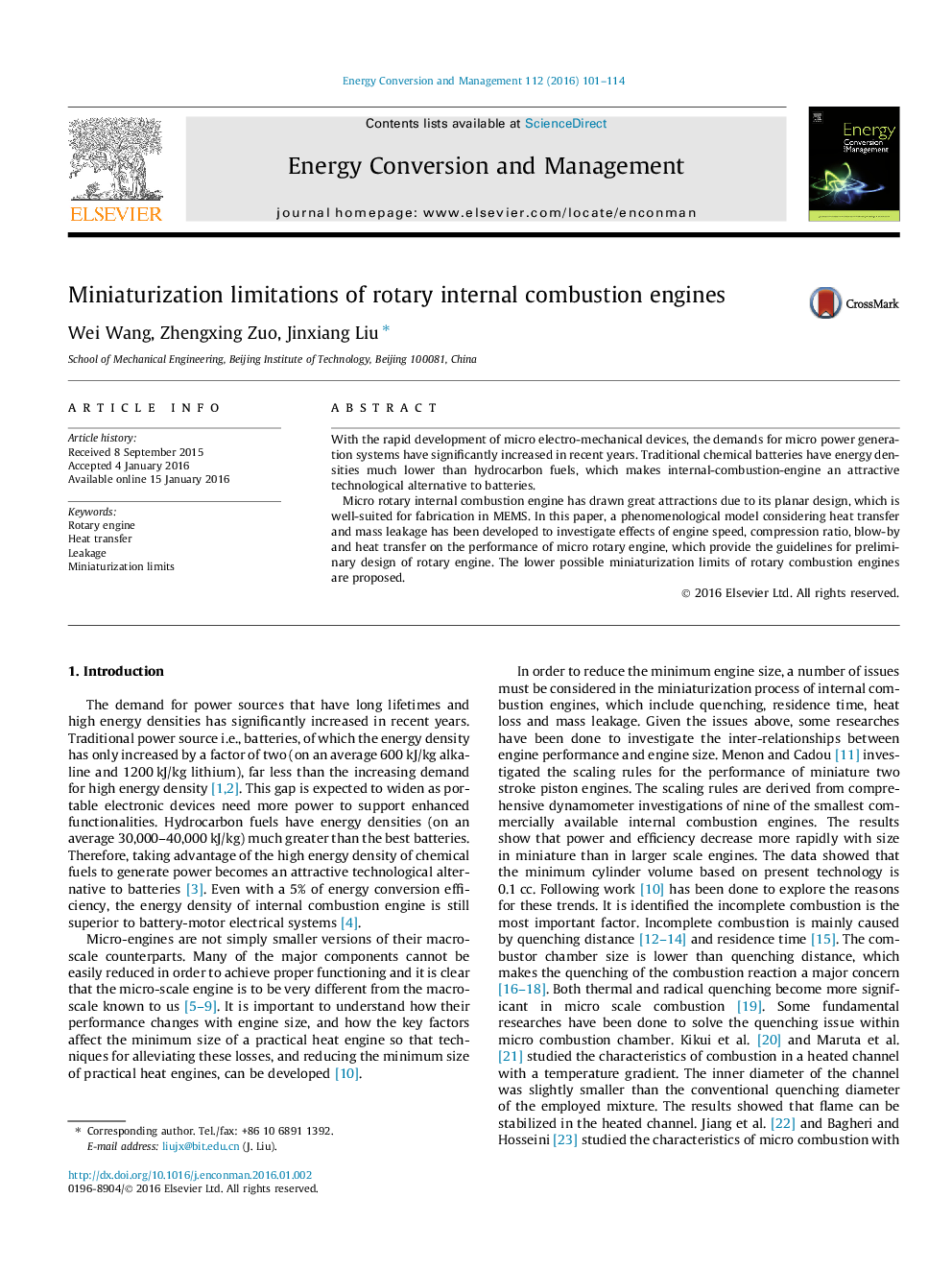| Article ID | Journal | Published Year | Pages | File Type |
|---|---|---|---|---|
| 763508 | Energy Conversion and Management | 2016 | 14 Pages |
•Developed a phenomenological model for rotary internal combustion engines.•Presented scaling laws for the performance of micro rotary engines.•Adiabatic walls can improve the cycle efficiency but result in higher charge leakage.•A lower compression ratio can increase the efficiency due to lower mass losses.•Presented possible minimum engine size of rotary internal combustion engines.
With the rapid development of micro electro-mechanical devices, the demands for micro power generation systems have significantly increased in recent years. Traditional chemical batteries have energy densities much lower than hydrocarbon fuels, which makes internal-combustion-engine an attractive technological alternative to batteries.Micro rotary internal combustion engine has drawn great attractions due to its planar design, which is well-suited for fabrication in MEMS. In this paper, a phenomenological model considering heat transfer and mass leakage has been developed to investigate effects of engine speed, compression ratio, blow-by and heat transfer on the performance of micro rotary engine, which provide the guidelines for preliminary design of rotary engine. The lower possible miniaturization limits of rotary combustion engines are proposed.
